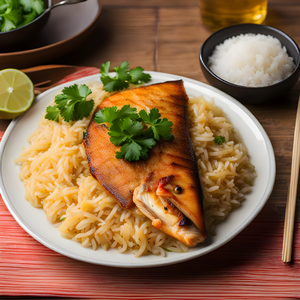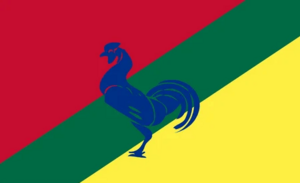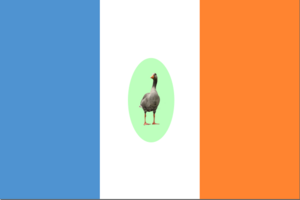Pivočeska Kraje: Difference between revisions
No edit summary |
No edit summary |
||
| Line 4: | Line 4: | ||
=== History === | === History === | ||
In the year 3045, Czech astronauts, '''Martin Kocián''' and '''David Kropáček''' decided they should form a human colony on a distant planet. Although the Czech government was hesitant at first, they eventually supported '''Kocián''' and ''' Kropáček's''' mission and granted them '''22,861,700 Czech Koruna''' or about '''1 million U.S. dollars''' in funding to help continue the project. With the help of another '''15 million U.S. dollars''' from the U.S. and other nations, the team was able to have the means to develop their project even further. After researching for 20 years for spaceships that would launch them to a specific planet and preparing the necessary resources for a human civilization to thrive,studying, and traveling to nearby planets to become used to and test their equipment, the team was set to go to space. After a couple failed attempts to take off, both of which, thankfully, did not result in any casualties or injuries, '''Kocián''' and ''' Kropáček''' landed on '''Planeta vápence''', the planet they had researched and studied. They brought with them lots of materials, but most importantly, life-Support systems, food Production, medical Supplies, waste Management Systems, biological diversity, construction materials, makeshift living quarters, and research and scientific equipment. After landing on the new planet, the astronauts used their '''Quanbons''', or space helmet mechanisms linked up to oxygen tanks that allowed air from the outside to be breathed in slowly and carefully over the span of a month by astronauts. The astronauts used this machine to survive for the first couple weeks. Later, after using the machines for a couple of weeks, the astronauts got used to the composition of the air and were able to slowly adapt to it. They started forming societies and although incredibly challenging, were able to survive for months and later years. The astronauts were then able to establish forms of government in their colony to maintain order. They created a republic named after the beer Pivo and their native county, the Czech Republic, therefore naming their republic, '''Pivočeska'''. After the death of the astronauts, their kids were able to keep the civilization thriving for decades, and eventually, generations, continuing the legacy of their ancestors | In the year 3045, Czech astronauts, '''Martin Kocián''' and '''David Kropáček''' decided they should form a human colony on a distant planet. Although the Czech government was hesitant at first, they eventually supported '''Kocián''' and ''' Kropáček's''' mission and granted them '''22,861,700 Czech Koruna''' or about '''1 million U.S. dollars''' in funding to help continue the project. With the help of another '''15 million U.S. dollars''' from the U.S. and other nations, the team was able to have the means to develop their project even further. After researching for 20 years for spaceships that would launch them to a specific planet and preparing the necessary resources for a human civilization to thrive,studying, and traveling to nearby planets to become used to and test their equipment, the team was set to go to space. After a couple failed attempts to take off, both of which, thankfully, did not result in any casualties or injuries, '''Kocián''' and ''' Kropáček''' landed on '''Planeta vápence''', the planet they had researched and studied. They brought with them lots of materials, but most importantly, life-Support systems, food Production, medical Supplies, waste Management Systems, biological diversity, construction materials, makeshift living quarters, and research and scientific equipment. After landing on the new planet, the astronauts used their '''Quanbons''', or space helmet mechanisms linked up to oxygen tanks that allowed air from the outside to be breathed in slowly and carefully over the span of a month by astronauts. The astronauts used this machine to survive for the first couple weeks. Later, after using the machines for a couple of weeks, the astronauts got used to the composition of the air and were able to slowly adapt to it. They started forming societies and although incredibly challenging, were able to survive for months and later years. The astronauts were then able to establish forms of government in their colony to maintain order. They created a republic named after the beer Pivo and their native county, the Czech Republic, therefore naming their republic, '''Pivočeska'''. After the death of the astronauts, their kids were able to keep the civilization thriving for decades, and eventually, generations, continuing the legacy of their ancestors, developing and shaping their future. | ||
=== Topography === | === Topography === | ||
''[[File:Rural road in Šťastná Slepice, Kozí Dům Okres, Kropáček Kraj .jpg|thumb]]'' | ''[[File:Rural road in Šťastná Slepice, Kozí Dům Okres, Kropáček Kraj .jpg|thumb]]'' | ||
Revision as of 16:04, 21 September 2023
Pivočeska or Pivočeska republik is a country in the space colony and later continent of Lví hvězdy or Lvihez in English. A rough translation would be "The Lion's Stars". Pivočeska is located in Western Lví hvězdy and was the first colony and country created in the planet Planeta vápence or "The Limestone Planet". Pivočeska is bordered by Kultúrova to the east, Hospodina to the south east, and Polskava to the south.
History
In the year 3045, Czech astronauts, Martin Kocián and David Kropáček decided they should form a human colony on a distant planet. Although the Czech government was hesitant at first, they eventually supported Kocián and Kropáček's mission and granted them 22,861,700 Czech Koruna or about 1 million U.S. dollars in funding to help continue the project. With the help of another 15 million U.S. dollars from the U.S. and other nations, the team was able to have the means to develop their project even further. After researching for 20 years for spaceships that would launch them to a specific planet and preparing the necessary resources for a human civilization to thrive,studying, and traveling to nearby planets to become used to and test their equipment, the team was set to go to space. After a couple failed attempts to take off, both of which, thankfully, did not result in any casualties or injuries, Kocián and Kropáček landed on Planeta vápence, the planet they had researched and studied. They brought with them lots of materials, but most importantly, life-Support systems, food Production, medical Supplies, waste Management Systems, biological diversity, construction materials, makeshift living quarters, and research and scientific equipment. After landing on the new planet, the astronauts used their Quanbons, or space helmet mechanisms linked up to oxygen tanks that allowed air from the outside to be breathed in slowly and carefully over the span of a month by astronauts. The astronauts used this machine to survive for the first couple weeks. Later, after using the machines for a couple of weeks, the astronauts got used to the composition of the air and were able to slowly adapt to it. They started forming societies and although incredibly challenging, were able to survive for months and later years. The astronauts were then able to establish forms of government in their colony to maintain order. They created a republic named after the beer Pivo and their native county, the Czech Republic, therefore naming their republic, Pivočeska. After the death of the astronauts, their kids were able to keep the civilization thriving for decades, and eventually, generations, continuing the legacy of their ancestors, developing and shaping their future.
Topography
Most of Pivočeska is mostly flat, with vast plains and grasslands, although there are some hills to the south and central north. Most of the land in the north of Pivočeska is used for farming crops like corn, wheat, and rice. However, in the Southwest, there is a mountain range called the Králický Sněžník Mountain Range. The mountains, hundreds of years ago, shifted elevation and the river Novější Vltava was born. The base of the river goes form the headwater all the way to the ocean to the west. The river runs south of the mountain range. This river is home to a very diverse array of sealife, which was a basis for civilization during the 3070s. The early astronauts and later settlers ate a fish called Karas obecný as it looked similar to the carp in some rivers in the Czech Republic.
Cuisine
Common staples of early Pivočeskan cuisine included dishes very similar to Czech cuisine, inspired by the astronaut's native homeland. However, due to the limited supply of earthly resources, many new crops had to be grown. Although many of earth's biodiversity had been introduced to the planet's environment, it wouldn't be until about 100 years later that Pivočeskan cuisine would include animals from earth as the nature and surronding ecosystem had not yet adapted to the makeup and compositions of materials from earth. In the earlier times, dishes such as Lepkavý Chléb or "gooey bread" where made from natural herbs and wheat from Planeta vápence. Also, another staple of early Pivočeskan cuisine included Mimozemské rybí knedlíky or Alien-like fish dumplings. These dumplings were made of the gooey bread dough combined with a new type of fish, not found on earth, which didn't resemble anything seen before. However, this fish was rich in protein and was often fished and eaten with rice, bread, or along the Novější Vltava river. In addition to the alienlike fish dumplings, there was also a type of cheesy pancakes or flatbread called Sýrové Palačinky made from the dough of the gooey bread combined with the cheese from imported cows or sometimes a cow combined with a creature from the planet, a kráva podobný, translated as a "cow-like" animal, were used in the recipe to make Sýrové Palačinky. Another food item is fish and rice or Ryby a Rýže, made from the alien-like fish and the rice grains imported from earth. This rice dish became very popular after rice fields were planted, around 80 years after the arrival of the astronauts to Planeta vápence.
Road markers and bollards
Interestingly enough, Pivočeska is known for having the most unique, distinctive, and stylish bollards
or road markers in all of Lví hvězdy. They are used to direct traffic and as barriers between the sidewalk and the road, but are also seen as interesting architectural works. Some look so futuristic and elegant, in modern Pivočeskan culture, the roadmarkers are treated as tourist attractions and pieces of art. There are also many different kinds of bollards. Many in the north, inVepřo-Knedlo, look like small robots or sci-fi machines, where as the ones in the south, in Nádražní have penguin-looking posts with a black base and a yellow stripe in the middle.
Geography
Pivočeska has 17 kraje or regions that were created over the course of many generations. They include:
- Alfons
- Brázdov
- Bělohlávek
- Dvořák
- Kropáček
- Krtek a Rumcajs
- Nádražní
- Skotský Pes
- Vepřo-Knedlo
- Hrabal
(list is not finished) Most are named after influential musical artists and architectural artists in Czech history, important components of modern Czech culture, Czech dishes and food, as well as well known literature and writers. Pivočeska is separated into kraje and okres, similar to the Czech Republic.




















